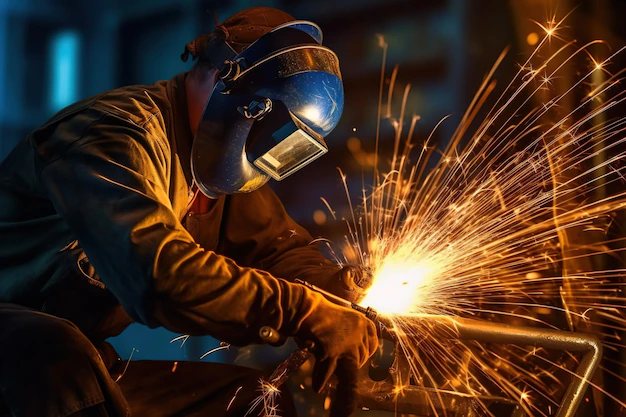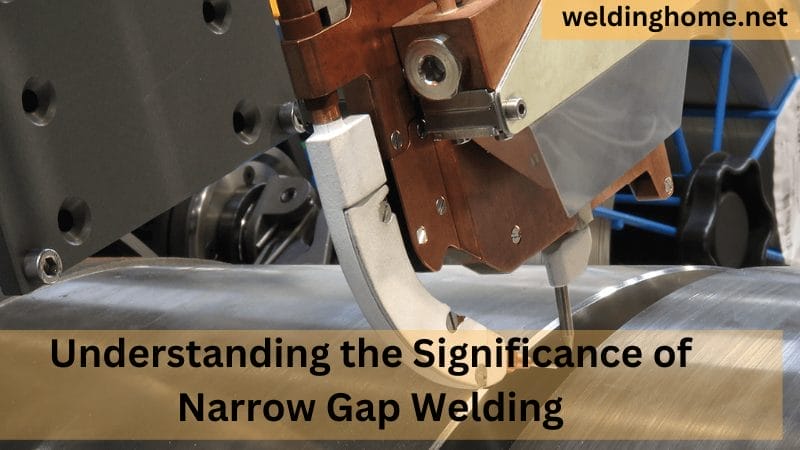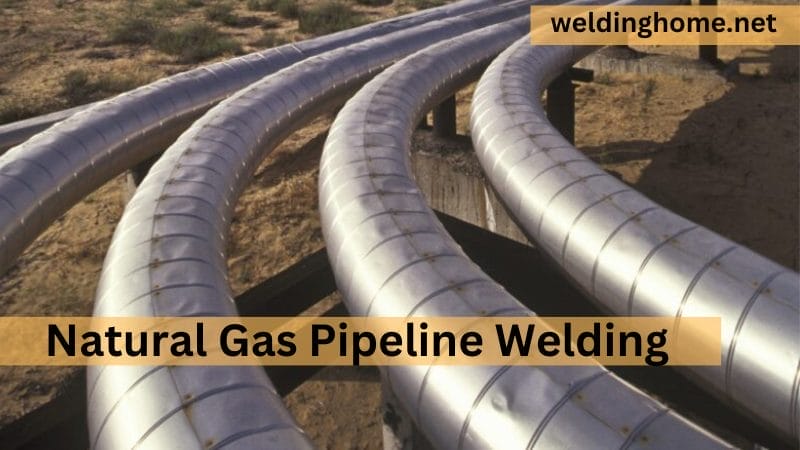“The Wonders of Underwater Welding” Dive into the Depths

Introduction
Welding in the Deep Blue | The Wonders of Underwater Welding is specialized at great depths. The profession is important because it maintains and repairs underwater infrastructure like bridges and pipelines. Think of it as an underwater repair superhero. Two methods are used for underwater welding. Wet welding is a standard underwater welding technology in which the welder penetrates the water. Welders use an underwater chamber for dry welding. Every method has advantages.
However, underwater welding is difficult. Consider navigating and doing activities in a dimly lit, murky environment with powerful water currents that affect one’s motions. A genuine underwater trip describes the experience. I will discuss the article, Underwater Welding. I will examine how it helps to improve underwater building durability and security. As we explore this fascinating sunken area, imagine yourself wearing hypothetical diving gear.
What is underwater welding used for?

Underwater welding is helpful for many things. Underwater welding has eight significant uses:
- Maintenance and repair of underwater bridge components depend on underwater welders. They repair corrosion and accident-caused cracks to keep bridge users safe.
- The offshore oil and gas business relies on underwater welding. It maintains and repairs underwater drilling systems, pipelines, and storage facilities. Welds must be sturdy to avoid environmental and financial damage.
- Below the waterline, standard welding processes can’t repair ships. Underwater welding repairs fractures and holes, keeping vessels seaworthy.
- Docks and piers at ports and harbors require maintenance. Underwater welding strengthens and repairs this infrastructure, making docking and shipping safe.
- Many power plants cool using water. Underwater welders repair and maintain these power plants’ aquatic elements to ensure efficiency.
- Underwater cables, sensors, and research equipment need accurate welding. Welders underwater ensure these systems work correctly.
- Maintenance and maintenance of undersea water treatment systems need welding. It prevents leaks and keeps water pure.
- Water dams and underwater tunnels need upkeep. Underwater welding keeps these structures strong, averting tragedies.
Finally, underwater welding is essential for bridge safety, energy, and industry. Welders must be skilled and fearless to protect our aquatic ecosystem.
Tools underwater welders use

To complete their challenging work under the water, underwater welders need various specialized tools and equipment. The following is a list of primary tools that underwater welders often use:
- Broco Cutting Torch
- Environment: Hyperbaric Welding
- Aquaponics: Underwater Communication System
- Underwater Welding Stinger
- The diver’s umbilical provides oxygen, electricity, and communication.
- Instruments for Magnetic Particle Testing
- Underwater Welding Quiver
- Hydraulic Underwater Grinder
- Underwater Welding Inspection Camera
- Underwater Welding Anode
Welding Techniques used underwater
Underwater welders use various welding methods to execute their duties inside the aquatic milieu efficiently. Underwater welders primarily use a variety of welding processes, which encompass:
Shielded Metal Arc Welding (SMAW)
Sometimes called “stick welding,” it is a widely used technique employed in underwater welding. The process involves using a consumable electrode coated with flux to generate robust, long-lasting welds.
Gas Tungsten Arc Welding (GTAW)
Tungsten Inert Gas (TIG) welding is an additional method professional divers use in underwater welding operations. Using a non-consumable tungsten electrode facilitates the production of accurate and superior welds, rendering it well-suited for applications of utmost importance.
Flux-Cored Arc Welding (FCAW)
This technique uses a continuously supplied electrode, including a flux core. This semi-automatic approach is employed in many welding applications. The adaptability and effectiveness of this approach make it very suitable for deep-sea welding.
Underwater friction welding
Underwater friction welding is a solid-state welding technique that generates frictional heat to facilitate the joining of two metal components. Pipe connections and structural repairs are often used in many applications.
The stud welding
The procedure entails using an arc welding method to affix studs onto the submerged structure. This practice is often used to ensure the stability and safety of supplementary components or fixtures.
Underwater wet
Welding involves the execution of welding operations directly inside a submerged environment, using electrodes engineered explicitly for this purpose. The technology exhibits versatility and is well-suited for diverse underwater welding applications.
Hyperbaric welding
Refers to a dry welding technique that is performed inside a chamber that has been pressurized. This technique guarantees a regulated setting and the production of welds of superior quality, rendering it highly suitable for the execution of essential repairs.
Underwater Cutting and Gouging
In conjunction with welding, underwater welders get training in cutting and gouging methodologies, which are used to eliminate impaired or undesirable materials before the welding process.
Process of underwelding

The execution of these welding processes requires considerable expertise and meticulousness, owing to the distinctive obstacles encountered while operating in an aquatic environment, including diminished sight, powerful water currents, and substantial hydrostatic pressures. To maintain the integrity and safety of submerged structures, underwater welders must carefully choose the most suitable approach for each operation.
Underwater welding is a sophisticated and highly specialized procedure that entails multiple processes for practical welding in complex underwater environments. Here’s a rundown of the course:
Diver Preparation
Before beginning any welding, the underwater welder must don their diving equipment, including an underwater suit, helmet, and breathing equipment. They also link to the diving umbilical, which connects to the surface support crew and provides oxygen, communication, and electricity.
Site Inspection
The diver checks the underwater object that requires welding first, sometimes as part of a team. They evaluate the damage’s degree, the welding needed, and potential hazards.
Cleaning and Preparation
The underwater welder clears the metal surfaces using specialized instruments such as hydraulic grinders and cleaning brushes to guarantee a robust weld. This procedure cleans the welding area of marine growth, rust, and pollutants.
The diver picks the proper welding electrode and connects it to the welding stinger according to the welding needed (SMAW, GTAW, or FCAW).
Welding Process
The diver begins the welding process cautiously, forming the weld bead by introducing an electric arc between the electrode and the workpiece. The heat produced melts the electrode, resulting in the formation of the weld metal. To achieve a perfect weld, the diver maintains exact control over the welding parameters, such as arc length and travel speed.
Flux use (if applicable)
Flux is sometimes used to protect welds against contamination by adjacent water. Before welding, a change is added to the weld region to function as a shield.
Visual examination
Once the weld has been completed, the diver performs a visual inspection to confirm that it satisfies the specified quality requirements. They search for flaws like fractures or incomplete fusions.
Non-Destructive Testing (NDT)
Non-destructive testing methods such as magnetic particle or ultrasonic testing may be used in critical applications to look for concealed faults inside the weld.
Documentation
All vital information regarding the welding process, including welding parameters, inspection findings, and abnormalities, is recorded for quality control and record-keeping reasons.
After the welding has been completed and examined, the diver may undertake post-weld cleaning to remove any remaining flux or slag from the welded joint.
Risks and Challenges

Underwater welding has inherent hazards and severe hurdles despite its relevance and value. Divers suffer restricted sight in muddy seas, frequently depending on artificial illumination, which may make exact welding difficult. Underwater solid currents may disturb the welding process, and high pressure at depths can endanger divers’ health if not properly regulated.
Furthermore, the welding atmosphere exposes divers to possible electrical risks, necessitating strict safety regulations and training. Moreover, welding operations must preserve the undersea ecology from toxins and disruptions. Mitigating these dangers and overcoming these problems is critical to guaranteeing the safety of underwater welders and the structural integrity of the structures on which they operate.
The future of underwater welding
The potential future of underwater welding presents tremendous opportunities, thanks to technological developments and safety precautions. Remote-controlled underwater welding robots are gaining popularity quickly because they enable precision welding in dangerous settings without endangering human divers.

These revolutionary robotic devices promise to make underwater welding more efficient and safe while improving precision and repeatability in difficult underwater conditions. Furthermore, continuous research into improved materials and welding procedures is anticipated to enhance the lifetime and endurance of underwater welds, ensuring that the essential structures under our seas survive in the years ahead.
Conclusion
Finally, underwater welding is a specialized and crucial field that connects us to the depths. It needs technical competence and bravery in difficult situations. Robotic advancements and better materials will change underwater welding as technology advances. However, welding under the waves is dangerous and requires the highest safety and environmental protection. Undersea welding is more than a job—it’s a tribute to human creativity and dedication that preserves vital undersea infrastructure on which our contemporary lives rely.
FAQs
Is underwater welding a dangerous profession?
It carries risks due to the challenging underwater conditions and the potential for electric shock. However, rigorous safety protocols are in place to minimize these risks.
What qualifications do you need to become an underwater welder?
To become an underwater welder, one typically needs a combination of welding certifications and commercial diving training.
How deep can underwater welders work?
The depth at which underwater welders can work depends on their training and equipment, but some operate in depths of up to 300 meters or more.
Are there any environmental concerns related to underwater welding?
Underwater welding can have environmental impacts, such as releasing contaminants. However, strict regulations are in place to mitigate these effects.






